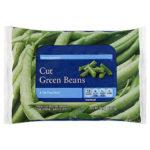The short answer? Never!
Put another way – when are you done learning new stuff? We hope the answer is the same – never!
The game might change
Of course you’ll move on from the basics. There will come a day when your dog runs to his/her “place” when the doorbell rings, or knows to “sit” before dinner is served, or resists jumping when a guest comes in the house.
Training changes over time, but it doesn’t ever have to end.
Dog = toddler = learning sponge!
Dogs have often been equated to toddlers – they have the mentality of three-year-olds. Throughout their lives, they’re sponges – always able to learn new things, always up for a new game. No one would ever think to stop playing with a little kid! Why would you stop playing with your dog?
Training is playing
When you’re starting a 2-Minute-Training session with your dog, look at it as “We get to play now!” Not as “time for (insert least favorite subject here (math)) class.”
And remember how your perspective on that changed, too? When you were a little kid, before you even went to school, you played “pretend” school. Did it stop being fun when you got to the real thing? That’s sad. Whatever was done to stop the fun – don’t do that!
Stuck? Change it up!
If you’re stuck on a particular step, either take a break, or take a step back. Do something else. Look at it a different way. Change the routine.
Even when we’re trying to perfect a skill required for competition in dog sports, we don’t work on it every session, or even every day. Take a break. It’ll come. There’s nothing wrong with “mixing it up!” As a matter of fact, it’s a good thing.
Dogs have favorite behaviors
Most dogs have favorites. If things aren’t going great with something new – revisit that old favorite. Hope’s Torque absolutely adores his “Tapping” behavior – he alternates touching his front paws on Hope’s corresponding foot. When he’s frustrated by something new, he goes right back into “Tapping” mode – hoping to coax Hope into doing something more comfortable than the new thing.
And he usually gets his way – after another attempt or two at the new skill. That way everybody’s happy.
If you’re not having fun, you’re doing it wrong
If training with your dog is a chore, if it’s an obligation rather than a joy, something’s wrong. That’s not the way it’s supposed to be. Something’s gotta change – an attitude adjustment, a different perspective, a bit of a break.
You never have to be done with playing with your dog.

